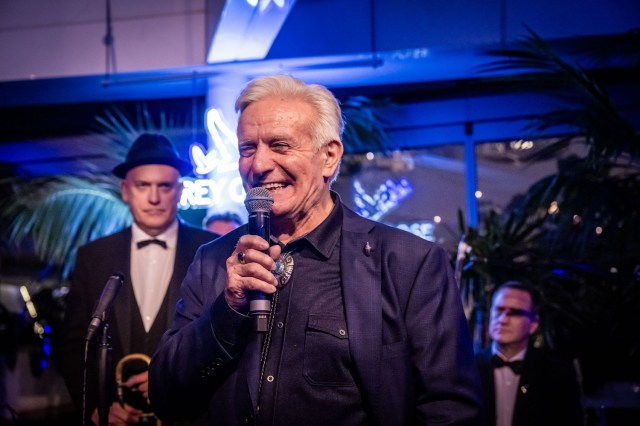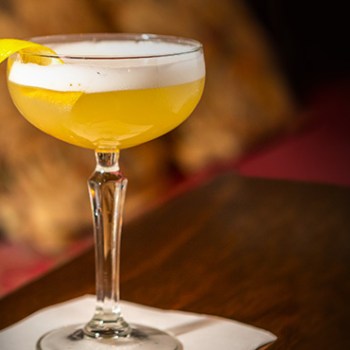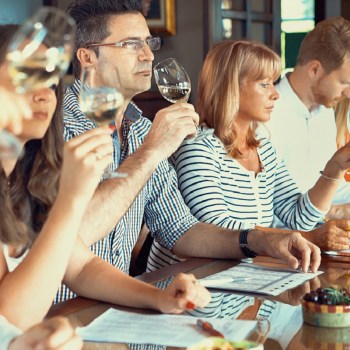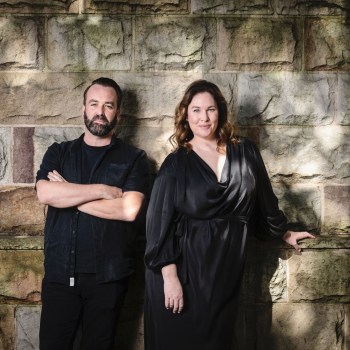When Dale DeGroff met restaurateur, Joseph Baum, in 1985 it was the start of a friendship and partnership that is still influencing today cocktail culture across the world.
Dale, as know as ‘King Cocktail’ is widely recognised as one of the key players in defining and creating the modern-day craft cocktail movement. But what is particularly interesting about this story is that Dale didn’t, certainly initially, re-write the book on cocktail creation. Fair from it, in fact he went back to books that had already been written, but that has been widely ignored for years, if not decades.
“Back in 1985, Joe forced me to go back to the 19th century and to the books that I had accumulated over the years,” Dale told Bars and Clubs.
“I worked with Joe on so many projects including the Rainbow Room and its changing menu. But if you go back to the first menu we had there and you look at the drinks, they are all classics from the 19th and early 20th centuries.
“This was stuff that just wasn’t on the menu anywhere. These hadn’t been on the menu since before prohibition in many cases, and so I was able to rotate in really great drinks that hadn’t been seen or been on menus since before prohibition.
“But the interesting thing is that Joe didn’t want variations, he wanted to classics, he wanted to bring back drinks that many people would never have seen on a menu – but they were the classics.
“Our job was to create drinks with tradition and dishes with tradition.”
Dale then told Bars and Clubs that as the craft cocktail movement re-embraced the classics, evolution came and things started to change.
“It was the people who saw what I was doing and what was happening in the craft movement, who started to say at the end of the last millennium, ‘OK, that’s cool, but what happens if I put Mezcal into the Old Fashioned’ and that’s when things started to get really interesting across many craft bars around the world.”
This idea of not re-inventing the wheel, just reviving classic drinks soon took off as other venues saw the success of Rainbow Room. Not only was dealing serving classic, pre-prohibition cocktails he was doing it with high quality ingredients and proper glassware to help build an incredible atmosphere in the bar that would soon be picked up to establish the craft cocktail movement.
Famed cocktail writer, Robert Simonson, said that Dale was the person behind the revival, and naming of, the cocktail glass that is the Nick & Nora. Dale contacted a local glassware design company in New York and asked them about a glass that had been front and centre in ‘The Thin Man’ series of books and films. Minner Designs sent him a 1930s catalogue and in that he found the ‘Little Martini’ glass. Minners then molded and restarted production of this glass which Dale named after the fictional detectives in the series, Nick and Nora Charles.
But as bartenders now do look at twists, where does the line come? How much of the original recipe do you have to have in order to call the cocktail a twist or a variation?
“You have to stay within the tradition of the drink,” Dale said. “With a Martini, you have to have at least a gin or a vodka in there, you have to have a wine or a fortified wine in there. And then you shake it or it could be stirred and you are staying within the traditions of the drink.
“You still have a lot of latitude. You can put spices in there, whatever you want, as long as you stay within the skeleton of that drink.”
He added: “Same with the Margarita, you have got have Tequila. You have got to have some kind of sour juice, you can choose it, and then you have got to have some kind of sweetener. If you want to make a Margarita with brown sugar, or triple sec or whatever, you just have to have sweet, sour and strong – and in the case of the Margarita the strong has always got to be Tequila.
“Just like chefs have their five basic sauces and they can make variations of those, it’s the same for us, our sauces have three elements: strong, sweet and sour – Go to town.
“We have the Old Fashioned, the original definition of that was a strong mix of spirits, bitters, water and sugar – go to town. That’s where you start as a bartender and if you think of it that way it becomes, first of all, more culinary and second of all you have a path to follow – you are not just randomly throwing shit at the wall.”



